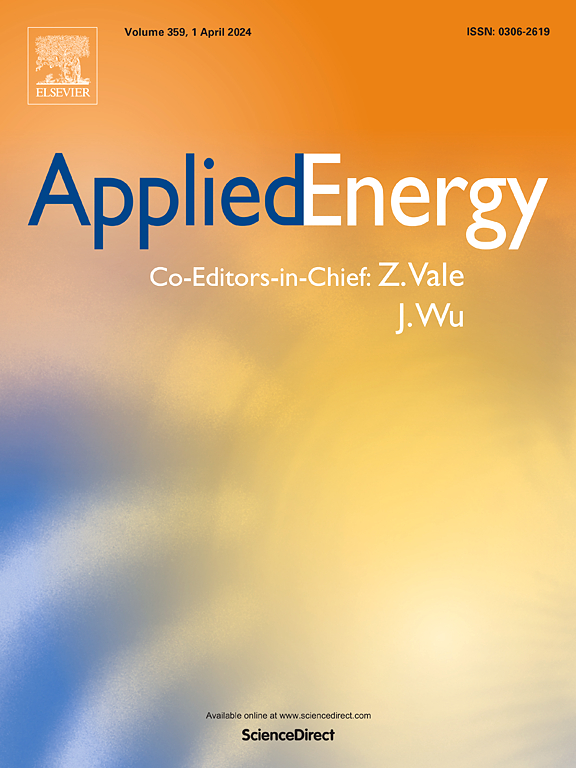Building electricity load forecasting based on spatiotemporal correlation and electricity consumption behavior information
IF 10.1
1区 工程技术
Q1 ENERGY & FUELS
引用次数: 0
Abstract
Accurate prediction of building electricity load is essential for grid management and building optimization operations. This paper proposes a novel approach based on spatiotemporal correlations and electricity consumption behavior information. The K-Medoids algorithm and the Derivative Dynamic Time Warping (DDTW) distance are employed to explore the correlation between electricity consumption behaviors among different partitions and floors. Different partitions and floors are clustered and grouped, followed by modifying the adjacency matrix with electricity consumption behaviors. The hybrid model and K-Medoids-LSTM model are proposed separately for clusterable nodes and non-clustered nodes. For clusterable nodes, spatial-temporal features are extracted, trained, and predicted with the hybrid model based on graph neural networks (GNNs) and LSTM models. A K-Medoids-LSTM model based on the K-Medoids algorithm is proposed to predict the electricity load of the non-clustered nodes. To explore the model's practicality, we predicted the building electrical load under different dataset sizes. The model achieves an R2 above 0.89, and the MAE, MSE, and RMSE of the GCN-LSTM and GAT-LSTM models all remain below 0.1, indicating strong predictive capabilities. The results demonstrate that, without relying on other external features, the proposed method can accurately predict the building electricity load for different partitions and floors simultaneously.
基于时空相关性和用电行为信息的建筑电力负荷预测
准确预测建筑物用电负荷对于电网管理和建筑物优化运行至关重要。本文提出了一种基于时空相关性和用电行为信息的新方法。本文采用 K-Medoids 算法和衍生动态时间扭曲(DDTW)距离来探索不同分区和楼层之间用电行为的相关性。对不同分区和楼层进行聚类和分组,然后根据用电行为修改邻接矩阵。针对可聚类节点和非聚类节点,分别提出了混合模型和 K-Medoids-LSTM 模型。对于可聚类节点,使用基于图神经网络(GNN)和 LSTM 模型的混合模型提取、训练和预测时空特征。提出了基于 K-Medoids 算法的 K-Medoids-LSTM 模型,用于预测非集群节点的电力负荷。为了探索该模型的实用性,我们预测了不同数据集规模下的建筑物电力负荷。该模型的 R2 高于 0.89,GCN-LSTM 模型和 GAT-LSTM 模型的 MAE、MSE 和 RMSE 均低于 0.1,表明该模型具有很强的预测能力。结果表明,在不依赖其他外部特征的情况下,所提出的方法可以同时准确预测不同分区和楼层的建筑用电负荷。
本文章由计算机程序翻译,如有差异,请以英文原文为准。
求助全文
约1分钟内获得全文
求助全文
来源期刊

Applied Energy
工程技术-工程:化工
CiteScore
21.20
自引率
10.70%
发文量
1830
审稿时长
41 days
期刊介绍:
Applied Energy serves as a platform for sharing innovations, research, development, and demonstrations in energy conversion, conservation, and sustainable energy systems. The journal covers topics such as optimal energy resource use, environmental pollutant mitigation, and energy process analysis. It welcomes original papers, review articles, technical notes, and letters to the editor. Authors are encouraged to submit manuscripts that bridge the gap between research, development, and implementation. The journal addresses a wide spectrum of topics, including fossil and renewable energy technologies, energy economics, and environmental impacts. Applied Energy also explores modeling and forecasting, conservation strategies, and the social and economic implications of energy policies, including climate change mitigation. It is complemented by the open-access journal Advances in Applied Energy.
 求助内容:
求助内容: 应助结果提醒方式:
应助结果提醒方式:


